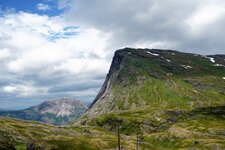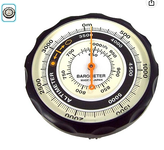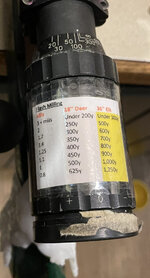I just saved this off. Very helpful. I used to do something similar but more complicated with a SPF variable with a standard plex reticle. I would use the narrow section on the reticle as a scale and mark my scope adjustment ring with yardages for average chest width. Since I added a rangefinder about 10 years ago, I had given up on that. This is quick and simple for those times when speed is critical or if your rangefinder dies.
Yep, did the same. And similarly, I used to practice milling a lot more because rangefinders were so unreliable. Then rangefinders got to the point where they were reliable and consistent enough that mil rangeing wasn’t needed anymore. A couple times I used it, but I had memorized simple versions (1 mil back to chest is 500 yards on a deer) that it wasn’t a big deal.
A few years ago I spent a month solid in the mountains with a some buddies in the dead of winter (this is when I really started to understand why AI and Sako put plastic skins on their rifles). It was common to be able to see targets, but not be able to get a laser through blowing snow, fog, or the ice in the air to get a range. On top of the range finder not cutting through it, the batteries were getting killed in the RF’s, the GPS’s and the Kestrels. Multiple batteries per day in the Kestrels even turning it on only to get the environmental data and wind for a specific shot. We ended up having to do a lot of mil ranging, map plotting, etc to get ranges and environmental data.
That lead me back to flash milling for animals. Thinking back there were two times in the previous couple of years that we could not get a range through swirling snow- the most recent was on an elk- two of the RF’s wouldn’t range (Swaro and Meopta), but two did (Nikon Laserforce). The second time we couldn’t get a range at all.
So, I started practicing milling- and particularly flash milling again; switched from using BP, Temp, Alt., to DA; printed a DA card, a milling card, and hard copy drop cards for different DA’s and put them in the bino harness. Putting that little flash milling sheet on the scope/rifle was the last step recently.
After that winter trip, I/we have used milling several times on animals. Once a couple years ago a we stalked up the backside of a small ridge on a herd of elk in a blowing snowstorm. The RF’s wouldn’t get through the snow, and we were periodically getting whiteouts. In between I milled a group of elk and knew they were sub 600 yards. It finally cleared enough for a shot, and the RF got a range- 560y, then it whited out again, cleared, etc. I was able to range a couple of predominant landmarks, one being the closer tree line right at 400 yards. So now we had a bracket of the far ridge at 700, then the smaller fingers were about 80 yards apart, all the way to the tree line at 400y. When the snow cleared the last time I killed one at 560y, the group ran a bit closer to the tree line, my buddy killed one at 408y without ranging first using average gun drops, then whiteout hit again. It would clear a bit and we could see them milling about, whiteout, etc. The last time it cleared they were running towards us and then cutting straight across our front. I flash milled on elk that paused briefly at smaller than 4 mils, not quite 3 mils. Told my buddy elevation 1 mil, and when one pauses, it’s on you. He killed a second one the moment it slowed down. The range afterwards ended up being 280 something yards (288y IIRC).
Using the reticle for ranging is not the reason to have a graduated reticle, as “milling” isn’t precise enough on live animals to use as a primary ranging technique. I also would not say people who’s shooting practice is mainly off a bench, spend time trying to learn and practice it. However, I want all the skill and ability to allow me the greatest chance of killing an animal that is possible. Milling, flash milling in particular; DA, quick math for drops, Wind brackets, rifles that can be shot in all conditions and positions versus specialized setups, cartridges that allow self spotting hits/misses, etc are all a part of that.




